By: Frank Cadenhead
Where is Stephen Colbert when you need him? He certainly could do a comedy routine about the train wreck that is the opening of the musical season in Paris this year. The goofiness of multiple openings of world-class events on the same day would get lots of laughs. In his absence I will try to fill in.
The French go on holiday in August. On September 1 they all arrive home and start unpacking and restocking their refrigerators. For those who work in opera or orchestras, after some days they are off to rehearsals to prepare for opening night. This year, “opening night” is all on one night, September 16. That night is the remarkable opening of internationally important season at the Opéra National de Paris. Their daring risk is to open with an almost unknown opera, Eliogabalo of Francesco Cavalli (composed in 1667). This effort is part of a recent laudable effort to revive interest in lesser known opera composers and return their works to the stage. The audience at the Palais Garnier will hear a much anticipated local debut of Leonardo Garcia Alarcon in the pit with Franco Fagioli in the title role. Young Thomas Jolly will stage this work and it is expected to raise the artistic bar for the whole season (which will include productions staged by Calixto Bieito and Dmitri Tcherniakov.)
But wait! On that very same night, the Orchestre de Paris is having a flashy opening in their glamorous new home at the Philharmonie de Paris with their exciting new music director, Daniel Harding. The opening program is the entirety of Scenes from Goethe’s Faust by Schumann. This spotlight makes a statement about the work, a magnificent and little-played masterpiece with soloists and chorus and will feature the masterful baritone Christian Gerhaher as Faust. Harding has been particularly engaged by this opus and has featured it in broadcasts when he appeared with the Berlin Philharmonic and has recorded it with the Bavarian Radio Symphony Orchestra and Chorus. How could this singularly important event be scheduled on the same night as the opening Eliogabalo?
Easy… A complete lack of management. Here is Norman Lebrecht’s writing about the Orchestre de Paris on his website Slipped Disc on September 12:
“There was widespread discontent when the Orchestre de Paris sacked Didier de Cottignies ahead of the arrival of its new music director, Daniel Harding.
No-one in the music world has a bigger contacts book than Didier and few know more about music.
However, Didier went and Daniel was said to be considering an English mate for the job. Apparently, that was greeted by the French like a Brexit-burger with HP sauce.
So the French establishment chose one of its own.
The new Délégué Artistique at the OdP is Edouard Fouré Caul-Futy, a producer at France-Musique. His experience is entirely with baroque music. He has a lot to learn.
He also happens to be the son-in-law of Martine Aubry, former presidential candidate and still a power-broker in the Socialist Party.
Aubry’s daughter, Clémentine, is Administrator of the auditorium at the Musée du Louvre.”
Googling the name Edouard Foure Caul-Futy today, September 13, made it absolutely clear that there is no current information in the French language about any such appointment on any French site. Are all the culture reporters still unpacking? Scrolling down his personal Facebook page, we see that he is just 35 and entered a note that he has left Radio France at the end of August. “Délégué Artistique, Orchestre de Paris,” is now shown as his current title. The Facebook page of the Orchestre de Paris shows nothing. Neither does their website and the only press contact listed on that site is for the excellent Annick Boccon-Gibod, who let us all know, on June 27, that she had left the orchestra. The speculation of Mr. Lebrecht, that this was an insider favor, seems more and more believable when the slim career of the new artistic director is more visible. It would be hard to image a serious job search resulting in the selection of someone with such a light CV, concentrated almost entirely in the early music scene.
But wait again! That same evening’s vital openings are not finished. September 16 has yet another important opening night, that of the Orchestre Philharmonique de Radio France in the auditorium at Radio France. Conductor Mikko Franck, starting his second year as music director, has recharged this orchestra and every concert shows the new excitement. This opening night has Einojuhani Rautavaara’s Lapsimessu (Children’s Mass). Rautavaara died just seven weeks ago and Franck, a fellow countryman of the composer, will conduct this work with the Maîtrise de Radio France, the children’s chorus. The Bruch Violin Concerto No. 1 is to be played by France’s most renowned violin virtuoso, Renaud Capuçon, and Franck, a well-appreciated interpreter of Richard Strauss, will finish with the Alpine Symphony. It would be hard to imagine a music lover willing to pass on that concert.
There is good news. With the new halls, the Philharmonie and the Radio France Auditorium, both with outstanding acoustics, the possibility of scheduling all opening nights on the same day is easier. Also, when you look at seat availability for all those events on the 16th, you will see that all will be full. The Parisian audience is ever-expanding and it is clear that the new halls, particularly the Philharmonie, have attracted new ticket buyers.
But the bad news is the failure of management to understand the need for more public notice about what the classical music community offers the public. Since newspapers everywhere have been giving more space and notice to more popular music-making, classical music has seen a sag in their amount of space in the media. While Parisian concert reviews are still a feature in major publications and newspapers, the fact that editors and journalists have to choose events to cover and exclude others would be totally unnecessary if there was a reasonable consideration, by managers, of how to space your major events to achieve the maximum notice.
Here is my concert and opera schedule for the next few days. Thursday is the opening concert of the new season for the Orchestre National de France. With Daniele Gatti taking over the Concertgebouw Orchestra of Amsterdam this season, we are awaiting performances by the new Music Director, Emmanuel Krivine. Since any decision takes a great deal of time bouncing around the long halls of Radio France, his appointment was only announced in June, long after the schedule was fixed. Opening night will be conducted by the French conductor Stéphane Denève (who some imagine might have been a better choice than Maestro Krivine.) The all-French program features Ibert, Saint-Saëns, Ravel and Florent Schmitt’s La Tragédie de Salomé. The next night, the famous “train-wreck” Friday, I will be again at the Radio France Auditorium for the opening concert of the Orchestre Philharmonique de Radio France, already noted. I was forced to make that choice because this concert, unlike the other events on the same night, will not be repeated. Saturday night was free and I will see the revival of Tosca as the first opera at Bastille (with Anja Harteros, Marcelo Alvarez and Bryn Terfel) because after the previous night’s multiple openings, nothing was repeated the next night. It is Sunday afternoon for the Harding debut with the Orchestre de Paris. The Monday night ticket is for the second performance of Eliogabalo at Palais Garnier. I might write again after the experience is over but the concentration of delights is even now a bit numbing. Music critics cannot write about every event and editors will not consider making space for such a concentration of events. In almost any other city, managers would work together to fashion a two to four week opening so that all events get the attention they deserve. This idea has yet to occur to the musical establishment in Paris.
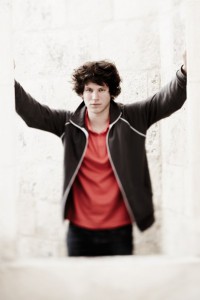
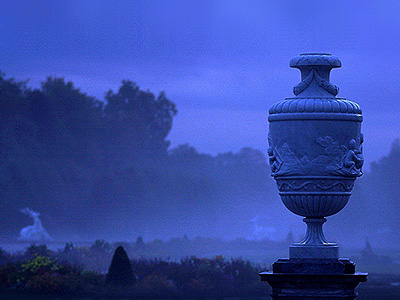
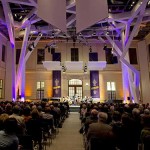
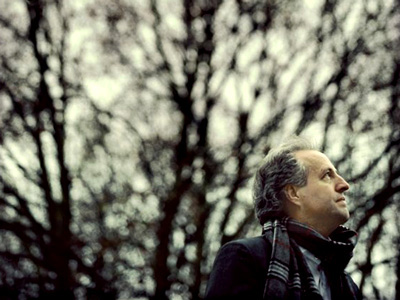
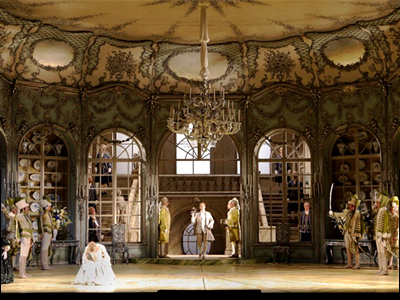
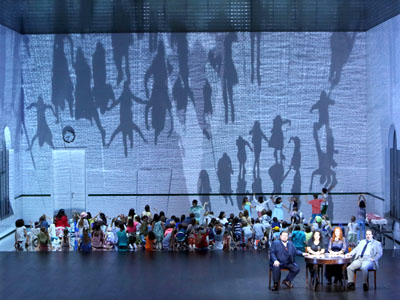
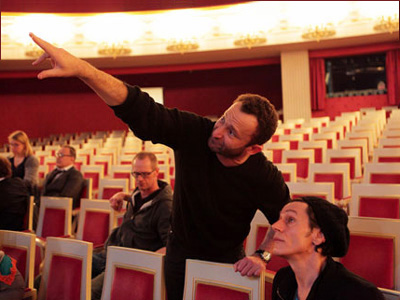
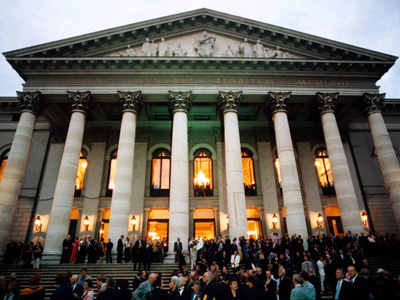
Salzburg Coda
Friday, October 31st, 2014By ANDREW POWELL
Published: October 31, 2014
SALZBURG — Alexander Pereira is now gone from the main festival here, and two tenuous summers are in the offing before Markus Hinterhäuser replaces him as Intendant in 2017. His exit, under a cloud, ends a budget tempest but threatens reversals of worthy initiatives he took: lengthening the schedule to six weeks, deepening the commitment to sacred music, insisting on fresh stagings for opera. Pereira did not adapt to the old-boy (and old-girl) Salzburg bureaucracy but he restored an element of decisiveness that had been lacking since Karajan and later Mortier ran things. And despite fiscal overages and gripes about casting, his programs were a Karajanesque blend of tradition and vetted novelty, exemplified on three August days in the paired artistry of Vilde Frang and Michail Lifits; concerts by the Mozarteum-Orchester and the Academy of St Martin In the Fields; and new productions of Fierrabras and La Cenerentola.
Peter Stein, wise yet out of fashion, told Schubert’s 1823 Carolingian tale straight, using monochrome flats and simple lighting tricks to paint and speed between differentiated, handsome scenes (Aug. 22, Haus für Mozart). His target: the seated theater audience, not roving DVD cameras. He stressed Christian values of compassion and peace, contrasting the vehemence of the Moors; Fierrabras was Fierrabras, destined for conversion, not an impersonation of the composer. But coarse horn playing marred the presentation of a score much dependent on that instrument, and conductor Ingo Metzmacher tended to allow the Vienna Philharmonic winds to swamp the luscious strings, the orchestra to swamp the singers. Of the six principal roles, Julia Kleiter’s silvery-voiced Emma did the music fullest justice. The Vienna State Opera Chorus sang magnificently, also magically.
Taking for La Cenerentola the opposite but these days routine path, Damiano Michieletto deployed hard-surface, camera-friendly sets and updated Perrault’s story (Aug. 23 matinee, same venue). His homey cafeteria, “Buffet Don Magnifico,” buzzed with credible characters and tightly calibrated action; a startling scenic transformation added depth. Angelina, in her middle years, found love at first sight while busing tables, and goodness triumphed at the close through gifts to her wedding guests: rubber gloves, buckets and soap; as those guests were put to work, she blew bubbles. In a probable farewell to this signature role, Cecilia Bartoli (48) exerted feisty charm, her sound opulent, the vocal ornaments expressive and fresh as ever. Mirroring her comedic sincerity, Javier Camarena sang a stylish Ramiro and a modest one, too, until Sì, ritrovarla io giuro. This he peppered with loud highs and a long last C brightened in a timbral arc. The basso roles were contrasted: Enzo Capuano a bully of a Magnifico with lucid patter and smooth legato, Ugo Guagliardo a cupid-magician Alidoro of rich tones but somewhat graceless phrasing, and Nicola Alaimo a robust Dandini who overplayed his comic hand. Jean-Christophe Spinosi and the Brest-based Ensemble Matheus rose to the witty occasion.
Tour appearances by the 55-year-old London orchestra (same day, at the Felsenreitschule) haven’t always validated the high standards of its early records. This one did. Tomo Keller’s work as guest concertmaster blazed with virtuosity and seemed to ignite all desks. Although uncredited by the festival, he led Mendelssohn’s D-Minor Sinfonia (1822) by himself, finding elegance and mature ideas as well as precision in the four movements. Seven winds and conductor Murray Perahia then joined the 24 strings for an exceptionally refined reading of Haydn’s Symphony No. 77 (1782) filled with neat contrasts and fresh turns of phrase; the airy Andante sostenuto could have spun for an hour without losing appeal. After the break, Beethoven’s Fifth Piano Concerto (1809) emerged in fluid streams of sound, the rhetoric measured, the attacks vivid. Perahia deftly balanced poetry and drama, piano and orchestra, signaling with his arms when not occupied at the keyboard.
Ivor Bolton, beloved Chefdirigent of the Mozarteum-Orchester, sandwiched ardent arias of Gluck and Mozart between G-Minor Sturm und Drang symphonies (Aug. 24 matinee, Mozarteum), packing quite a punch. Resilient rhythms, vigorous angular themes and tidy dynamic shifts enlivened Haydn’s Symphony No. 39 (1765), capped by an Allegro di molto that expertly whirred along. In Mozart’s Symphony No. 25, written eight years later and inspired by the Haydn, Bolton elicited equal cohesion and propulsion, favoring tautness over repose, but the volume of sound pushed the limits of the 800-seat hall. Rolando Villazón brought astounding degrees of verbal expression and ample vocal luster to his three Mozart arias — Per pietà, non ricercate (1783), Or che il dover (1766) and, as vehicle for clowning, Con ossequio, con rispetto (1775) — buoyed and gamely resisted by Bolton and the orchestra. In Gluck’s Unis dès la plus tendre enfance, from Iphigénie en Tauride (1779), the tenor delivered the French words with operatic flair.
After the recital by Frang and Lifits (same day, same venue), one woman asserted aloud that Frang couldn’t possibly play the violin to full potential for lack of flow in her body movements, while another attendee bemoaned pianist Lifits’s gum-chewing facial mannerisms. What was certain was that two unique personalities had made music. They combined best in the pieces that opened and closed their program, Brahms’s Scherzo for the Frei aber einsam Sonata (1853) and Strauss’s similarly confident and classically formed E-flat Sonata (1888). Results: clear lines, passionate phrasing, ideal balances, a definite sense of structure. Lifits could be heavy in the left hand and seemed not always aware of his partner, but she proved able to enlarge her tone when she chose, adding volatility. The stylistic jump from Brahms to Mozart’s Violin Sonata in E-flat, K481 (1785), had the effect of Frang receding: Tashkent-born Lifits played as if on solid ground and the Oslo violinist looked happy to let him dominate, especially in the crisply articulated Allegretto. Beethoven’s A-Major Sonata, Op. 30/1 (1802), after the Pause, suffered slow tempos and a lack of drama.
Where the Salzburg Festival goes now, post Pereira, will be partly evident next month when the 2015 summer plans are announced. In all likelihood there will be cost-cutting to counter past overages, such as for 2013 when a reported $5 million went out the door beyond the approved $76 million. Once Hinterhäuser fills the Intendant void, the danger is of a well-bookkept but artistically dithering institution — a return, in effect, to qualities of the ten summers preceding Pereira’s 2012 arrival; Hinterhäuser, a pianist, participated in management for some of those years and is not known as a forceful character. The compass at present is with Sven-Eric Bechtolf, grandly styled “Artistic Master Planner 2015 and 2016” (a promotion from heading just the theater programming), and the festival’s indomitable Cost-Cutter-in-Chief, a.k.a. Präsidentin, Helga Rabl-Stadler.
Photo © Silvia Lelli
Related posts:
Nitrates In the Canapés
Mozartwoche: January’s Peace
Christie Revisits Médée
Netrebko, Barcellona in Aida
Pintscher Conducts New Music
Tags:Academy of St Martin In the Fields, Alexander Pereira, Bartoli, Beethoven, Brahms, Commentary, Damiano Michieletto, Ensemble Matheus, Enzo Capuano, Felsenreitschule, Fierrabras, Gluck, Haus für Mozart, Haydn, Helga Rabl-Stadler, Ingo Metzmacher, Ivor Bolton, Javier Camarena, Jean-Christophe Spinosi, Julia Kleiter, La Cenerentola, Markus Hinterhäuser, Mendelssohn, Michail Lifits, Mozarteum, Mozarteumorchester, Murray Perahia, Nicola Alaimo, Peter Stein, Review, Richard Strauss, Rolando Villazón, Rossini, Salzburg, Salzburg Festival, Salzburger Festspiele, Schubert, Sven-Eric Bechtolf, Tomo Keller, Ugo Guagliardo, Vienna Philharmonic, Vienna State Opera Chorus, Vilde Frang, Wiener Philharmoniker, Wiener Staatsopernchor, Wolfgang Amadeus Mozart
Posted in Munich Times | Comments Closed